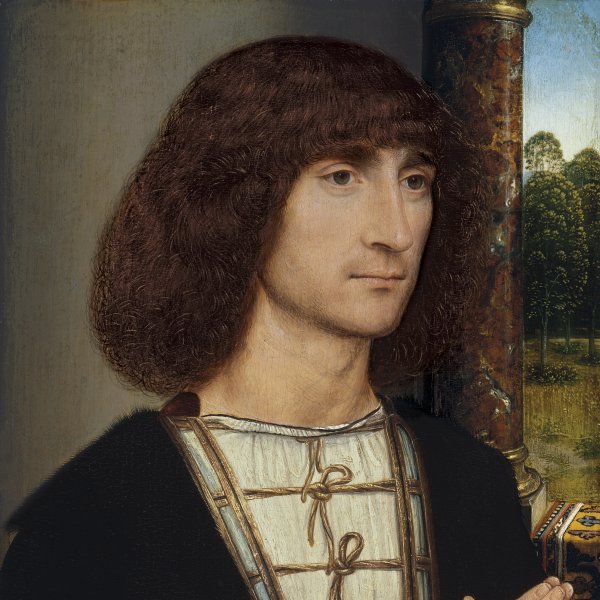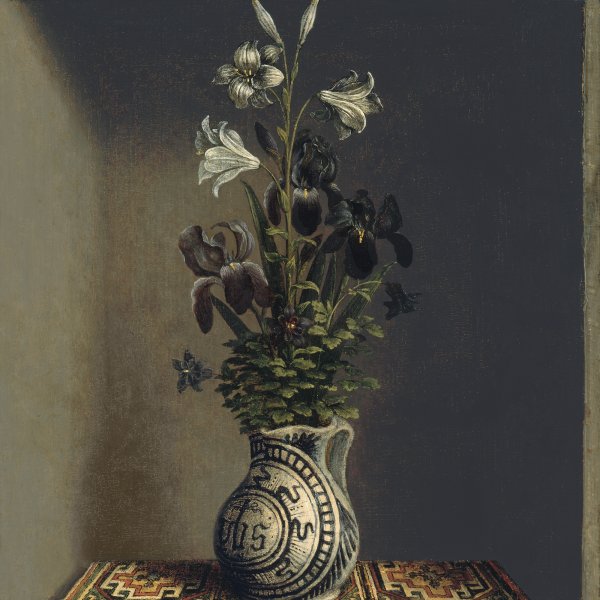The Crucifixion
The Master of the Virgo inter Virgines was a Netherlandish painter and designer of prints active in the late 15th century. He was given his name by Max Friedländer, who established his oeuvre on the basis of an altarpiece in the Rijksmuseum, Amsterdam, depicting the Virgin with Saints Catherine, Cecilia, Ursula and Barbara. In the present work the principal motif of the crucifixion has been shifted to the right and the centre of the composition is occupied by the riders and soldiers below the cross. The rest of the crucifixion group with the two thieves is depicted on a smaller scale than that of Christ, and in general the artist makes use of models developed by earlier Flemish painters. In the background we see two further episodes from the Passion, namely Mary attended by two of the holy women and Christ bearing the cross, whose inclusion helps to create a sense of narrative. The large number of figures in the painting means that the landscape is of secondary importance. The strong light and the dark tonality of the background accentuate the reddish and orange tones of the figures, helping to focus the viewer’s attention on them.
NR
The Master of the Virgo inter Virgenes uses an expressive style in the depiction of the figures, also evident in his approach to other elements used to organise his compositions. The figures in his religious scenes are expressive in a grave, profound manner, while the physical type of the heads is extremely distinctive. Their faces are characterised by an emphasis on broad, bulging foreheads and angular features.
The present Crucifixion is depicted using a high viewpoint. The principal episode is located on the right in order to place most emphasis on the group of riders and soldiers at the foot of the cross, who are located in the foreground of the composition. With a highly developed narrative sense, the artist introduces two further, secondary episodes from the Passion: Mary attended by two holy women and Saint John, and Christ bearing the cross followed by a king and a bishop. Overall, the composition has a dense, crowded feel due to the arrangement of the figures, which are packed into a narrow space. The Master of the Virgo inter Virgines depicts the thieves (with their legs already broken to judge from their position) following the northern iconographic model in which the crosses have no upper vertical section and the thieves’ arms are tied over the horizontal beam. The Good Thief on Christ’s right looks towards the Redeemer while the Bad Thief on his left lowers his head with his face covered with a dense mass of hair. In general, the figures are painted on a smaller scale than in other works by the artist while the figure of Christ is derived from traditional Flemish models that were popularised by the first generation of Flemish painters. Only Longinus can be identified among the knights and soldiers looking at the crucified figures. The painting depicts the moment when Christ’s side is pierced by the lance and Longinus (the elegant young man on horseback) points to Christ with his raised left hand.
Mar Borobia









